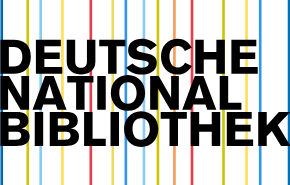THE ISSUE OF BEING IN THE SPIRITUAL LEGACY OF MUSOKHONKHOJA DAHBIDIY
DOI:
https://doi.org/10.55640/Keywords:
Existence, eternal, Ibn Arabi, essential attributes, oneness, individuality, monotheism, Al-Futuhat al-Makkiyya , Fusus al-Hikam , mutakallim, Kun Fayakun , Shaykh al-Islam Ghazali, Imam Rabbani, contemplation.Abstract
This article analyzes the views of Musakhan Dahbidi, a major theorist of the Naqshbandi-Mujaddidiya order, on the issues of tawhid, wahdat al-wujud, and wahdat ash-shuhud. It also discusses Musakhan Dahbidi's comparative analysis of Ibn Arabi's views on wahdat al-wujud and Ahmad Sirhindi's views on wahdat ash-shuhud.
References
1.Usman Turar. History of mysticism / Responsible editor S. Raf'iddin. - T.: Istiklal, 1998. - 180 p.
2.Boltaev A. Social and philosophical views of Muhyiddin Ibn Arabi. - Bukhara, 2023. - B.68.
3.Knysh A.D. Mirovozzrenie ibn Arabi (K istorii sufiyskikh ucheniy). Religii mira. - M.: 1884. - S. 84.
4.Muhyiddin Ibn Arabi. Ar-Risalatul Wujudiyya. - Beirut: Darul Qutubul Ilmiya, 2004.
5.Abdurahman Jami. Kalimāti qudsiya-yi Khoja Muḥammad Porso. – Tashkent: FA ŞI, Manuscript, inv. No. 10395/III. – Vol. 6 a .
6.Trimingham Dj. S. Sufi orders in Islam / Pod ed. O.F. Akimushkinna . - M., 1989. - 328 p.
7.Radtke Bernd. Theology and mysticism in Khorasan and Transoxania // Sufism in Tsentralnoy Azii (foreign research). Sbornik statey pamyati Frittsa Mayera (1912-1998) / Sostavitel i otv. editor Khismatullin A.A. - S-Pb., 2001. - S. 40-76.
8.Zoyirov E. Philosophical and socio-political views of Yakub Charkhi. - Bukhara, 2023. - B. 72.
9.Dahbidi Musakhan. Ad-Durr al-maknun. - Tashkent: FA ShI, Manuscript, inv. No. 542 / I I.
10.Jurakulowicz , SJ (2023). Philosophical Views of Sages on Human Values and Glorifying Him. Theory oath analytical aspects of recent research , 2 (16), 229-238.
11.Boltabaev H. Sources of Islamic Sufism. – Tashkent: “O'qituv”, 2005. – P.191.
Downloads
Published
Issue
Section
License

This work is licensed under a Creative Commons Attribution 4.0 International License.
Authors retain the copyright of their manuscripts, and all Open Access articles are disseminated under the terms of the Creative Commons Attribution License 4.0 (CC-BY), which licenses unrestricted use, distribution, and reproduction in any medium, provided that the original work is appropriately cited. The use of general descriptive names, trade names, trademarks, and so forth in this publication, even if not specifically identified, does not imply that these names are not protected by the relevant laws and regulations.







